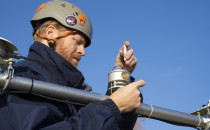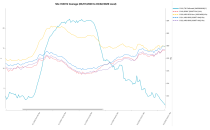
NRG Systems has developed a tool that will give wind project owners and operators the opportunity to preemptively assess the value of installing ultrasonic bat deterrents on their turbines.


NRG Systems has developed a tool that will give wind project owners and operators the opportunity to preemptively assess the value of installing ultrasonic bat deterrents on their turbines.

NRG Systems has had a strong philanthropic focus for decades. As we navigate the various challenges 2020 has presented as a company and as a community, we believe it is more important than ever to support one another.

Thanks to our complete system approach to solar monitoring, NRG is well-positioned to provide everything you need – from hardware to software to services – to meet your needs according to IEC 61724-1.

A recent bat exclusion project in Bibb County, Georgia, was the first endeavor that called for the creation of a floating “bat barge” to keep a colony of nearly 350 bats out of harm’s way.

In July 2019, NRG Systems tested its Bat Deterrent System at Fernhill Wetlands in Portland, Oregon.
As the wind industry’s adoption of Lidar technology continues to grow, Doppler Lidar has been gaining ground as a more flexible, lower-cost, and safer option for hub-height measurements than lattice towers.

Duke Energy Renewables recently published an article on their Illuminations website chronicling their experience with bat conservation and NRG's Bat Deterrent Systems.

Bats are notoriously difficult to study due to their small size, nocturnal habits, and penchant for hiding during daylight hours. Therefore, we were particularly excited when researchers from the National Renewable Energy Laboratory (NREL) asked NRG to take part in an innovative study exploring how bats interact with ultrasonic acoustic deterrents.

There are several improvements introduced in the BP60 Barometric Pressure Sensor, but perhaps the most important is the introduction of native temperature-compensation.

With numerous Lidar technologies used for wind measurement today, it is fair to wonder which device is best suited for use in cold climates. ZX Lidars has spent a considerable amount of time analyzing how their Doppler Lidar technology, ZX 300, performs in clear-air, low-backscatter conditions typical of high latitudes.